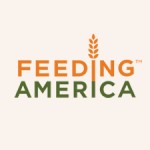 “The US Department of Agriculture recently released a white paper that documents The Emergency Food Assistance Program’s (TEFAP) role in support of the nation’s emergency food assistance network.
“The US Department of Agriculture recently released a white paper that documents The Emergency Food Assistance Program’s (TEFAP) role in support of the nation’s emergency food assistance network.
“Feeding America is pleased with the Department of Agriculture’s report that found in recent years that TEFAP contributions to the emergency food assistance system have become increasingly important as other supports, such as private food donations, have not kept pace with increased demand.
“Moreover, the new report documents the important role that TEFAP plays for very vulnerable populations.
“Nearly three-fourths of TEFAP households are food insecure, and more than one-third of TEFAP households do not participate in other nutrition assistance programs.
“The USDA’s tool for assessing the nutritional quality of diets is the ‘Healthy Eating Index’ (HEI). USDA research shows that TEFAP foods achieved an HEI score of 89 out of 100. In contrast, the overall US food supply included a less nutritious mix of foods with an HEI score of only 55.
“This report shows what food banks and our clients have known all along—the USDA has made great strides to ensure that TEFAP foods are highly nutritious, and that is apparent in how sought-after TEFAP foods are by our food banks and clients.
“The white paper reinforces Feeding America’s message that we must protect low-income programs to ensure families facing hunger receive help. The need for emergency food assistance has outpaced supply at a time of continued elevated unemployment and underemployment as well as increased food and fuel costs. As a result, food banks are facing chronic high demand and not enough resources to meet the demand.
“As Congress continues discussions on the farm bill, we urge them to invest in programs that help feed children, seniors and working families at risk of hunger and poor nutrition, like The Emergency Food Assistance Program. ProtectingSNAP, WIC, and other federal nutrition programs will ensure that struggling families continue to receive critical food assistance.
“Federal nutrition programs are working exactly as intended, safeguarding vulnerable families against hunger. TEFAP is a critical part of how the Feeding America network tries to meet the increased demand across our network; unfortunately, we have seen TEFAP foods decline in recent years as strong agriculture markets mean less bonus commodity purchases by USDA. With this report underscoring how crucial TEFAP is to the nation’s hungry, we urge USDA and Congress to ensure a steady and consistent supply of TEFAP to the nation’s emergency food assistance network.
“The Emergency Food Assistance Program (TEFAP) is a means-tested federal program that provides food commodities at no cost to Americans in need of short-term hunger relief through emergency food providers like food banks, pantries, soup kitchens, and shelters. USDA Foods available through TEFAP provide foods consistent with the Dietary Guidelines for Americans, with reduced levels of fat, sodium, and sugar.”




